spoolin01
Contributor
This is very useful information, thanks for all the effort. I've been interested in having one for some time but have yet to buy. I got a UEI unit (UEI Test CO71A Carbon Monoxide Detector w/ Free UPS) that I used when I first set up my gasoline powered oil-less compressor, but sold it after convincing myself that CO was a manageable issue, and installing an inline strip indicator and CO scrubber. I bought it on eBay as a new unit, and it was still working 3 years later when I sold it. I also got one of these (Aeromedix.com - CO Experts Model 2010 Low Level Carbon Monoxide Monitor/Detector - 7ppm detection limit) to reference it against as a check. I never calibrated with gas.
I'm wondering if you've confirmed what the lower limits of detection are for the units you've looked at? With digital displays, there's some room for confusion between the display reading range and the accurate range of the sensor. There's also likely to be an exposure time component to the sensor reading at the limit of it's detection range, I'd think. I've spent a few hours this afternoon browsing home CO detectors and portable industrial monitoring units and sadly even for the industrial units, this type of information is usually lacking.
I found a couple of industrial 3M units that are relatively inexpensive if purchased through 3M. Their base model 110 unit ($54) only reads in 5ppm increments starting at 20ppm, so one may or may not consider that suitable. There's a 110XL which reads from 5ppm in 1ppm increments, but so far I've only seen it for several hundred dollars. They make a small but less portable unit, the 450 for $115 (Shop 3M: 3M Single Gas Detector 450-450-101-050, Carbon Monoxide (CO), 50 PPM Alarm) but I haven't been able to confirm its specs.
Here's an interesting approach I just found - Gastec tubes @$7, the most sensitive reads in the 1-30 ppm range. Some sort of hand pump is needed too. May not suit the scuba 'workflow' if the tubes have short shelf life once opened, but could be a handy thing for travel, if the pump isn't too large. Gastec Carbon Monoxide Tubes
So far I'd say the Pocket CO 300 looks about as good as any, both performance and price-wise - why are you looking to replace yours (or are you)?
Here's the UL standard I found for CO alarms. The carboxyhemoglobin information and plot at the end show sensitivity to sustained CO exposure. I've seen 8 hours @9ppm as an environmental safety limit, though the alarms seem to mostly key around 30-35ppm as an alert threshhold, which is supported by the graph.
Have you seen any discussion of CO exposure at depth? (Sorry, I've not taken the time to search for this...)
I'm wondering if you've confirmed what the lower limits of detection are for the units you've looked at? With digital displays, there's some room for confusion between the display reading range and the accurate range of the sensor. There's also likely to be an exposure time component to the sensor reading at the limit of it's detection range, I'd think. I've spent a few hours this afternoon browsing home CO detectors and portable industrial monitoring units and sadly even for the industrial units, this type of information is usually lacking.
I found a couple of industrial 3M units that are relatively inexpensive if purchased through 3M. Their base model 110 unit ($54) only reads in 5ppm increments starting at 20ppm, so one may or may not consider that suitable. There's a 110XL which reads from 5ppm in 1ppm increments, but so far I've only seen it for several hundred dollars. They make a small but less portable unit, the 450 for $115 (Shop 3M: 3M Single Gas Detector 450-450-101-050, Carbon Monoxide (CO), 50 PPM Alarm) but I haven't been able to confirm its specs.
Here's an interesting approach I just found - Gastec tubes @$7, the most sensitive reads in the 1-30 ppm range. Some sort of hand pump is needed too. May not suit the scuba 'workflow' if the tubes have short shelf life once opened, but could be a handy thing for travel, if the pump isn't too large. Gastec Carbon Monoxide Tubes
So far I'd say the Pocket CO 300 looks about as good as any, both performance and price-wise - why are you looking to replace yours (or are you)?
Here's the UL standard I found for CO alarms. The carboxyhemoglobin information and plot at the end show sensitivity to sustained CO exposure. I've seen 8 hours @9ppm as an environmental safety limit, though the alarms seem to mostly key around 30-35ppm as an alert threshhold, which is supported by the graph.
Have you seen any discussion of CO exposure at depth? (Sorry, I've not taken the time to search for this...)
Attachments
-
ul2034_CO.pdf222.7 KB · Views: 1,841
-
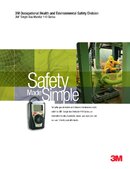 3M_110_COmonitor_07.jpg325.3 KB · Views: 141
3M_110_COmonitor_07.jpg325.3 KB · Views: 141 -
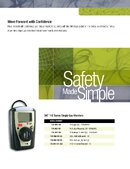 3M_110_COmonitor_08.jpg334 KB · Views: 134
3M_110_COmonitor_08.jpg334 KB · Views: 134 -
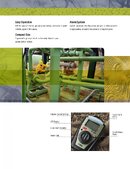 3M_110_COmonitor_09.jpg383 KB · Views: 120
3M_110_COmonitor_09.jpg383 KB · Views: 120 -
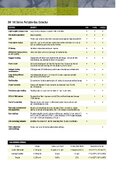 3M_110_COmonitor_10.jpg390.3 KB · Views: 126
3M_110_COmonitor_10.jpg390.3 KB · Views: 126 -
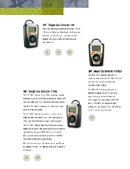 3M_110_COmonitor_11.jpg388.7 KB · Views: 131
3M_110_COmonitor_11.jpg388.7 KB · Views: 131 -
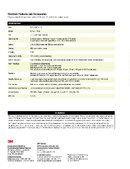 3M_110_COmonitor_12.jpg403 KB · Views: 132
3M_110_COmonitor_12.jpg403 KB · Views: 132
Last edited:




